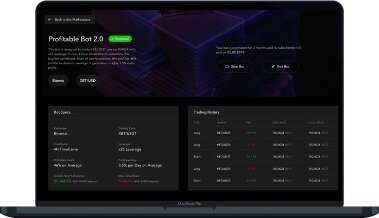The Role of Liquidity Providers in the Currency Market
Having a sense of what other providers are charging for a similar service will assist you in making a decision. In order to find a solid FX liquidity provider, you first need to do your research and identify your needs. After that, you should look up the ratings of the best liquidity providers on the Internet and conduct a comparative analysis to see which one suits you best. Once you find a few suitable options, you need to make evaluations of the liquidity provider’s performance criteria based on this list. Now that you know who the Forex liquidity providers are and what kinds of these important market players exist, it’s time to know what criteria you need to consider when choosing a reliable liquidity provider.The emergence of electronic trading systems made possible the creation of global trading floors, the largest of which today is the Forex market. Forex trading involves significant risk of loss and is not suitable for all investors. The U.S. dollar represents about half of international loans and bonds. Because almost every investor, business, and central bank own it, they pay attention to the U.S. dollar. Find the approximate amount of currency units to buy or sell so you can control your maximum risk per position.
For STP brokers, much also depends on the type of liquidity provider they use.
Will not accept liability for any loss or damage, including without limitation to, any loss of profit, which may arise directly or indirectly from use of or reliance on such information. Brokers appeared with the emergence of the stock exchange, the place where buying and selling of securities occurs. B2Prime, the top-notch solution, can connect brokers to 115 Forex pairs, 22 crypto CFD pairs, spot metals, indices, and spot energies through the OneZero, MT5, and PrimeXM platforms. To join liquidity pools, choose the finest liquidity aggregation and liquidity venues (such as MetaTrader 4/5 or B2Trader), which were given the best reviews. The volume of a broker’s order book might determine the amount of liquidity available to customers. A bigger order book indicates that there are far more orders to fulfill, which can contribute to improved liquidity, leading to bigger profits for everyone involved.Companies or individuals who offer capital to a financial institution or market maker to trade securities or financial instruments are known as liquidity providers. Liquidity providers play an essential role in global markets by providing the capital necessary to facilitate trades. It would be difficult for brokerages and trading firms to execute trades quickly and efficiently without a liquidity provider.
Mauritius VASP – crypto gateway into Africa
This diversification helps protect the liquidity provider from losses if one security becomes unexpectedly volatile. While the forex market is relatively very liquid, the market depth could change depending on the currency pair and time of day. Thanks to regulatory licenses, the B2Broker’s solution is a component of the company’s bigger strategic goal to have a solid position in all essential countries and to establish itself as a global FX liquidity provider.If brokers lacked access to the appropriate liquidity, traders would not be able to execute their orders. Fourth on our list is GBP/USD or the Pound Sterling quoted against the U.S. This pair is also sometimes called “Cable” since quotations in this currency pair were historically made via the transoceanic cable. Typically, dealing spreads in this pair are between two and four pips wide, and it tends to have a higher volatility and a lower trading volume than EUR/USD, for example.
What is Liquidity?
The primary liquidity providers in the over the counter Interbank forex market are market makers operating at major commercial banks and some investment banks. The top liquidity providers in the foreign exchange market are known as “Tier 1” liquidity providers. Participants of such trading floors are usually different economic entities geographically located at any point globally. Thanks to such financial institutions, today’s Forex market is the most liquid and has a daily turnover of trillions of dollars.
- Thanks to such financial institutions, today’s Forex market is the most liquid and has a daily turnover of trillions of dollars.
- Unlike other financial markets like the New York Stock Exchange or London Stock Exchange , the forex market has neither a physical location nor a central exchange.
- It can also be thought of as a large supplier of goods in a regular retail chain.
- Furthermore, you can contact the provider directly and ask them any questions regarding the service.
- Tier 1 liquidity providers include international banks such as Morgan Stanley, Bank of America, Goldman Sachs, J.P. Morgan, Barclays Capital Bank, Citi Bank, Deutsche Bank, Nomura, and others.
- The first type of liquidity provider may be another broker or a bank executing transactions as a Market Maker.
- We’re also a community of traders that support each other on our daily trading journey.
A smaller order book, on the other hand, may make it more difficult for a broker to find counterparties for deals. Forex brokers usually establish electronic bridges to automatically connect their own or a third party trading platform with another platform that acts as an ECN. Market makers are forex liquidity providers generally compensated by the differential between the bid rate and the ask rate that is typically known as the dealing spread. The dealing spread is charged for providing this liquidity as a service. Some providers may use outdated technology, while others may use cutting-edge technology.
#Latency – how it affects FX brokers and traders? (Part I)
Online forex brokers typically access an ECN/STP network to execute their trades. ECN stands for Electronic Communications Network, while STP stands for Straight through Processing. Other brokers operate on an NDD or No dealing desk basis, meaning that all their transactions go directly to a Tier 1 or secondary liquidity provider. FX liquidity providers typically offer their services to brokerages and trading firms in exchange for a fee.


